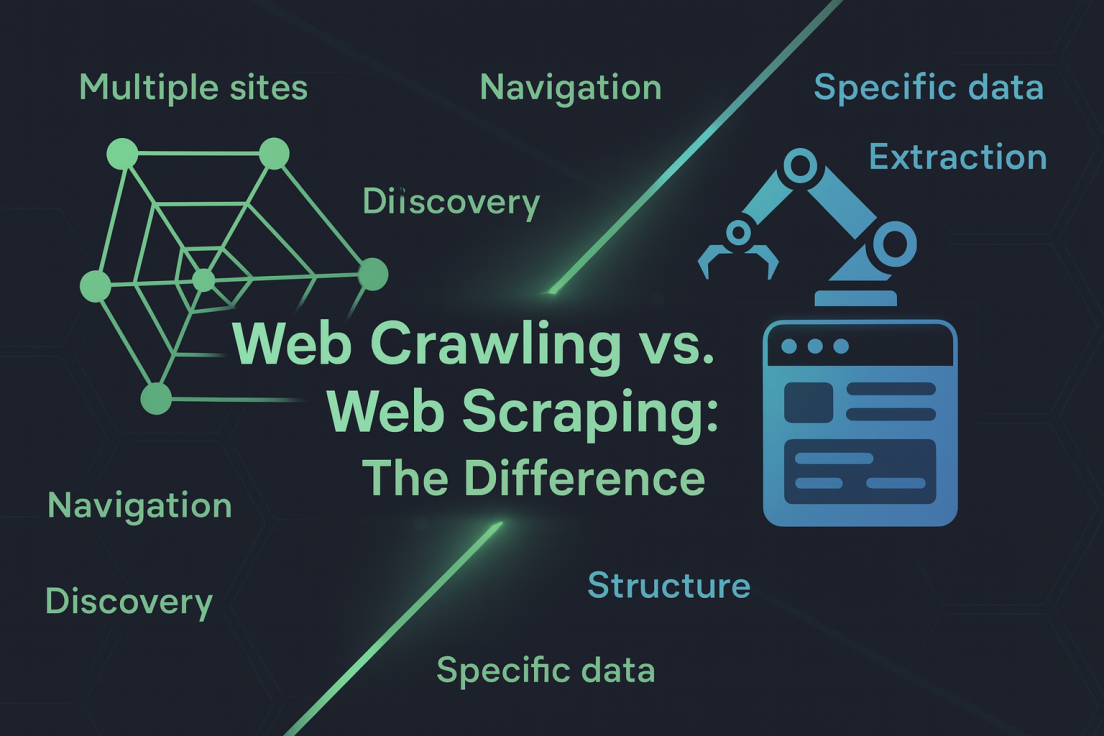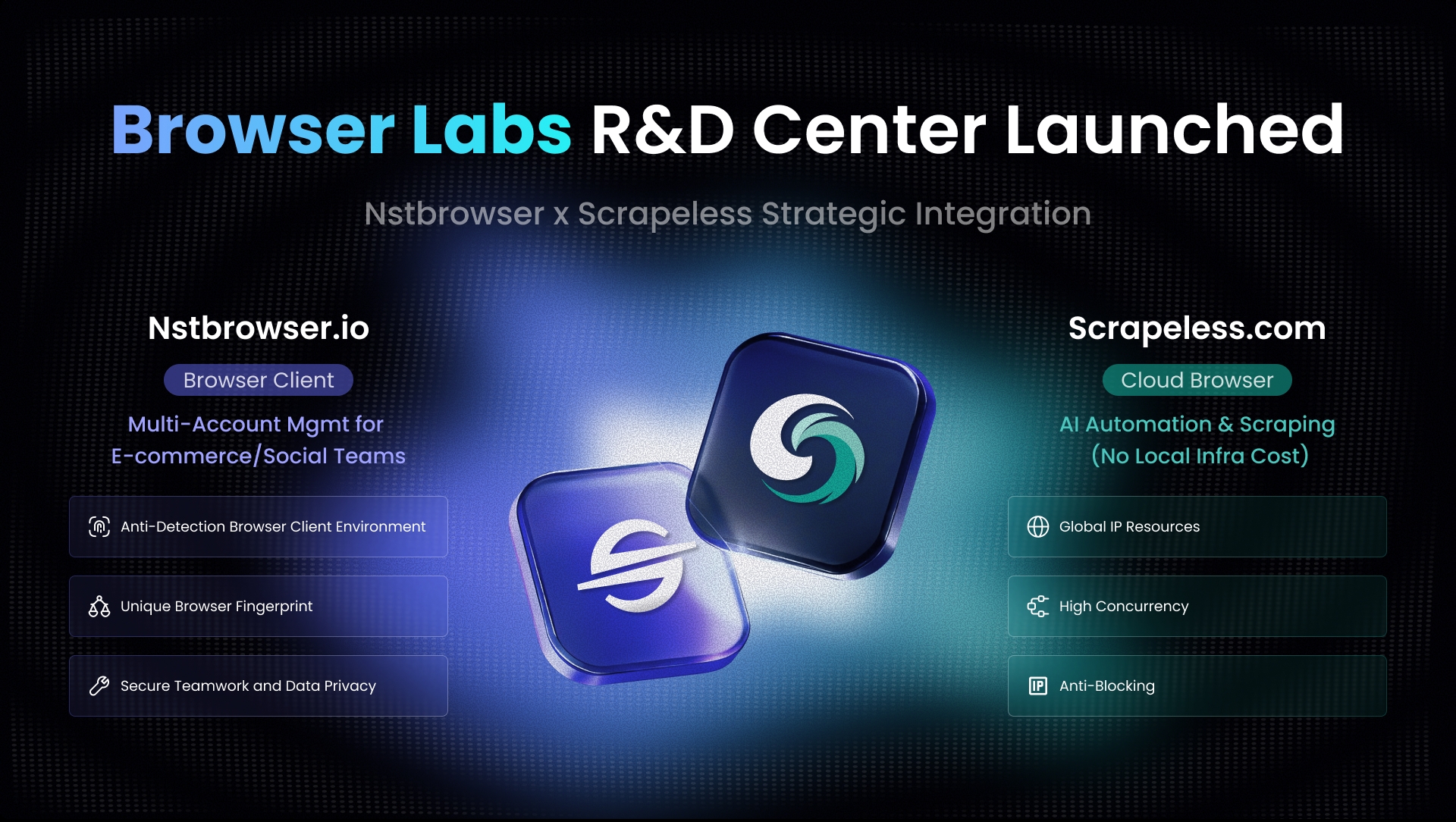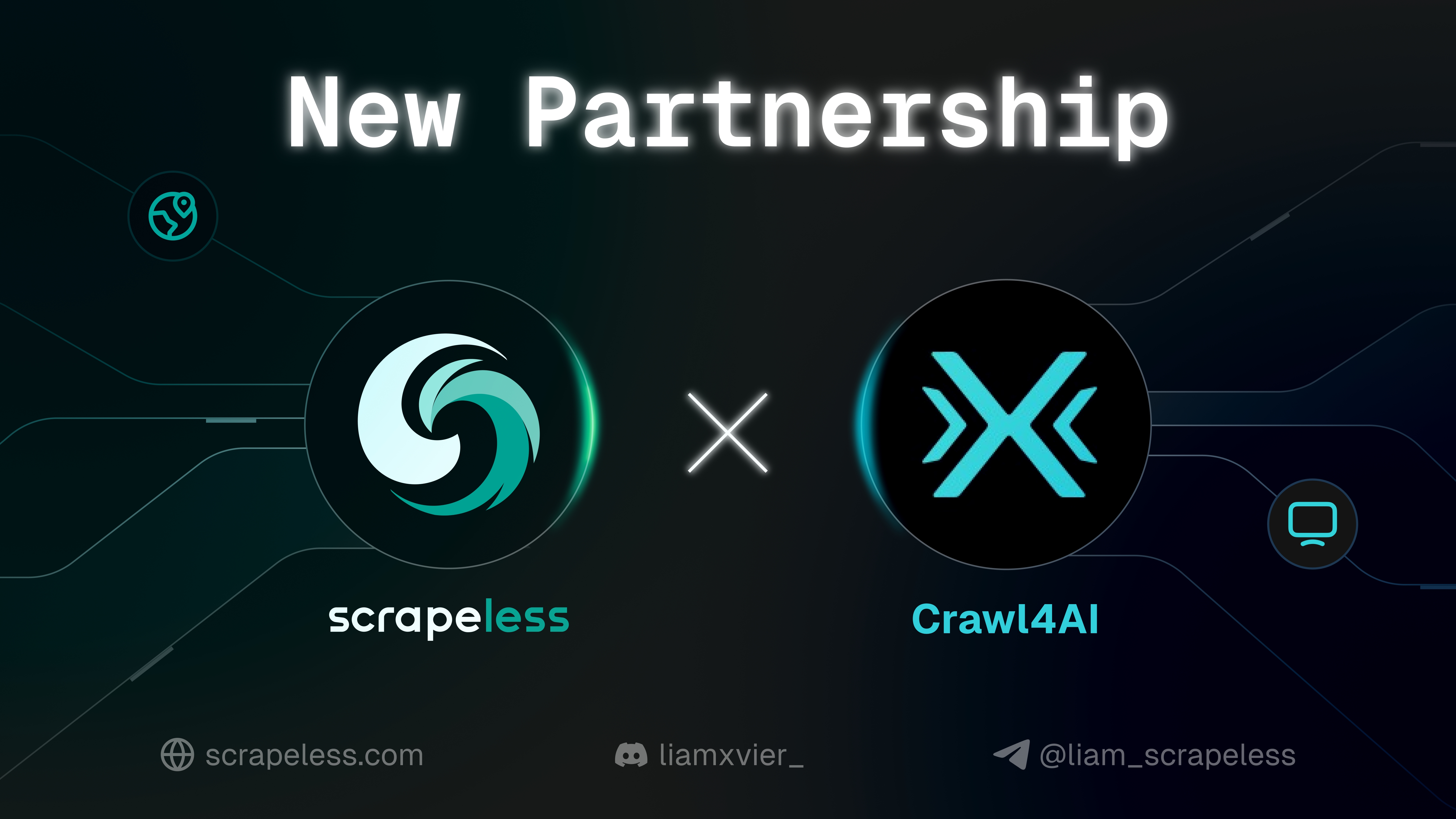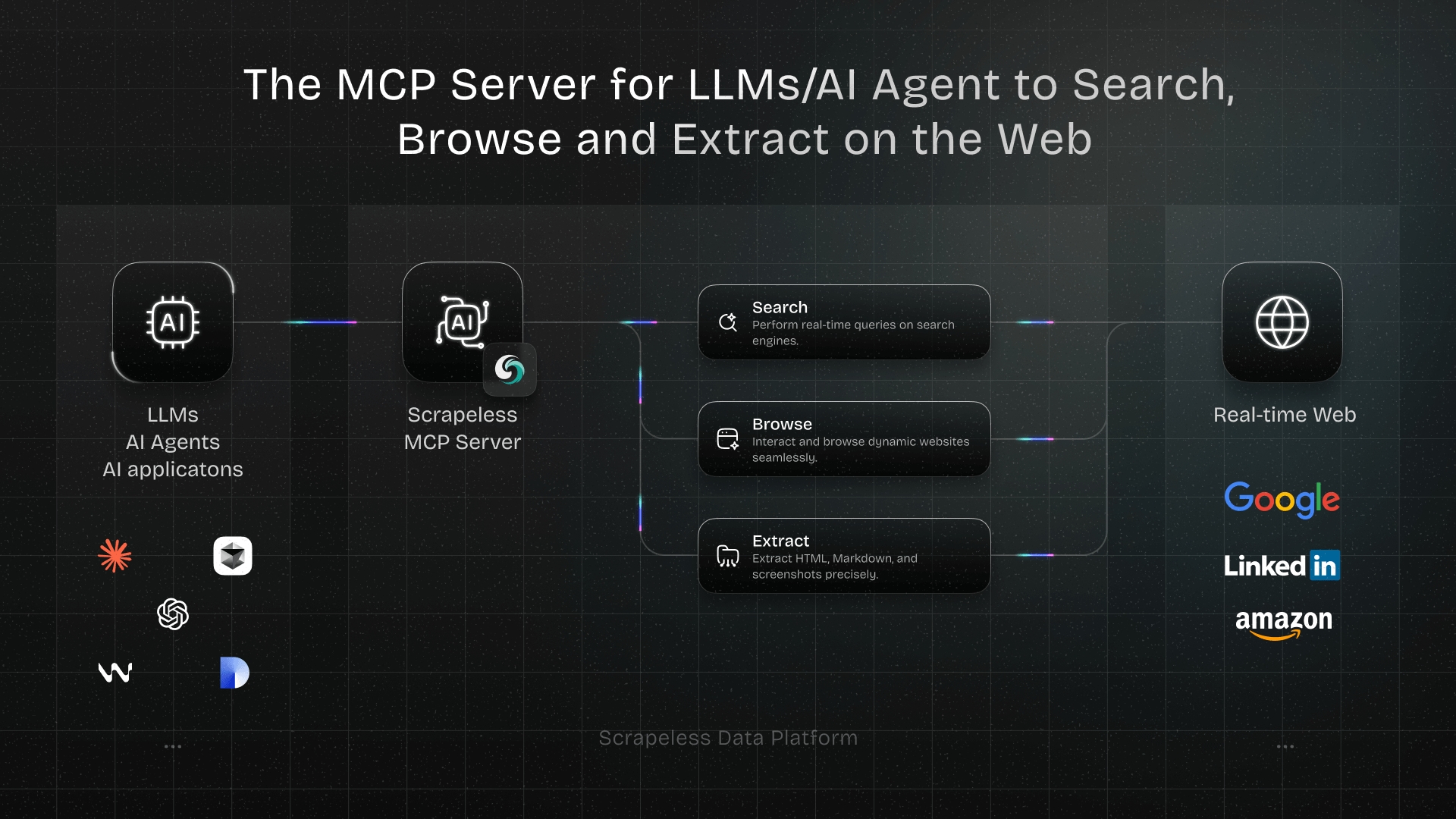Web Crawling vs. Web Scraping: The Difference
Expert Network Defense Engineer
Key Takeaways
-
Web Crawling: Automated process of discovering and indexing web pages by following hyperlinks.
-
Web Scraping: Extracting specific data from web pages, such as product details or prices.
-
Integration: Crawling often precedes scraping in data collection workflows.
-
Tools: Common tools include Python libraries like
Scrapy,BeautifulSoup, and services like Scrapeless. -
Legal Considerations: Always review a website's
robots.txtfile and terms of service before crawling or scraping.
Introduction
In the realm of data extraction from the web, two fundamental techniques are often discussed: web crawling and web scraping. While they are closely related, they serve distinct purposes and are implemented differently. Understanding the difference between these two is crucial for anyone involved in data collection, SEO, or digital marketing.
This article delves into the nuances of web crawling and web scraping, providing clarity on their differences, use cases, and how they complement each other. By the end, you'll have a comprehensive understanding of both techniques and how to leverage them effectively.
What Is Web Crawling?
Web crawling is the process of systematically browsing the World Wide Web to index and retrieve web pages. This is typically done by search engines like Google to update their content or indices of other sites' web content. A web crawler, also known as a spider or spiderbot, is an internet bot that automatically browses the web and indexes content for search engines. ([Wikipedia][1])
How It Works
-
Starting Point: The crawler begins with a list of URLs to visit, known as seeds.
-
Fetching Pages: It visits these URLs and retrieves the web pages.
-
Extracting Links: From the fetched pages, it extracts hyperlinks to other pages.
-
Queueing New URLs: The new URLs are added to the list of URLs to visit.
-
Repetition: The process repeats, allowing the crawler to discover and index a vast number of web pages.
Use Cases
-
Search Engine Indexing: Enables search engines to list and rank web pages.
-
Website Audits: Helps in analyzing website structure and identifying issues.
-
SEO Analysis: Assists in understanding how search engines view a site.
What Is Web Scraping?
Web scraping is the process of extracting specific data from web pages. Unlike crawling, which is concerned with discovering links, scraping focuses on retrieving particular pieces of information, such as product prices, contact details, or news headlines. ([Wikipedia][2])
How It Works
-
Target Page: Identify the web page containing the desired data.
-
Fetching Content: Retrieve the HTML content of the page.
-
Parsing HTML: Analyze the HTML structure to locate the data.
-
Extracting Data: Use techniques like CSS selectors or XPath to extract the data.
-
Storing Data: Save the extracted data in a structured format, such as CSV, JSON, or a database.
Use Cases
-
Price Monitoring: Tracking product prices across e-commerce sites.
-
Market Research: Gathering competitor data for analysis.
-
Content Aggregation: Collecting news or blog posts from various sources.
Comparison Summary
| Aspect | Web Crawling | Web Scraping |
|---|---|---|
| Purpose | Discover and index web pages | Extract specific data from web pages |
| Focus | URLs and links | HTML content and data elements |
| Tools | Crawlers, spiders | Scrapers, bots |
| Output | List of URLs | Structured data (e.g., CSV, JSON) |
| Use Cases | Search engine indexing, SEO audits | Data analysis, market research, content aggregation |
Integrating Crawling and Scraping
In many data collection workflows, crawling and scraping are used together:
-
Crawl: Use a crawler to discover and index URLs.
-
Scrape: For each discovered URL, use a scraper to extract specific data.
This combination allows for efficient and comprehensive data collection.
Case Studies
1. E-Commerce Price Monitoring
An e-commerce company wants to monitor competitor prices.
-
Crawling: A crawler discovers product pages across competitor websites.
-
Scraping: A scraper extracts product names and prices from these pages.
-
Outcome: The company analyzes the data to adjust its pricing strategy.
2. Real Estate Market Analysis
A real estate firm aims to analyze property listings.
-
Crawling: A crawler identifies property listing pages on various real estate websites.
-
Scraping: A scraper extracts property details, such as price, location, and size.
-
Outcome: The firm uses the data to assess market trends and make investment decisions.
Recommended Tool: Scrapeless
For those looking to streamline their web crawling and scraping processes, Scrapeless offers a user-friendly platform with robust features. It simplifies the complexities of data extraction, making it accessible even for those with limited technical expertise.
Conclusion
Understanding the difference between web crawling and web scraping is essential for effective data collection. While crawling focuses on discovering and indexing web pages, scraping is about extracting specific data from those pages. By leveraging both techniques appropriately, you can gather comprehensive and targeted data to meet your needs.
Consider using Scrapeless to enhance your data extraction capabilities.
FAQ
Q1: Can I use web scraping without crawling?
Yes, if you already have a list of URLs, you can directly scrape data from them without crawling.
Q2: Is web scraping legal?
The legality of web scraping varies by jurisdiction and website terms of service. Always review a website's robots.txt file and terms before scraping.
Q3: What are the common tools for web crawling and scraping?
Common tools include Python libraries like Scrapy, BeautifulSoup, and services like Scrapeless.
Q4: How can I prevent my website from being crawled?
You can use a robots.txt file to specify which parts of your site should not be crawled.
Q5: What are the challenges in web scraping?
Challenges include dealing with dynamic content, handling CAPTCHAs, and ensuring compliance with legal restrictions.
At Scrapeless, we only access publicly available data while strictly complying with applicable laws, regulations, and website privacy policies. The content in this blog is for demonstration purposes only and does not involve any illegal or infringing activities. We make no guarantees and disclaim all liability for the use of information from this blog or third-party links. Before engaging in any scraping activities, consult your legal advisor and review the target website's terms of service or obtain the necessary permissions.



